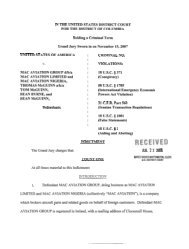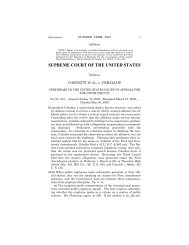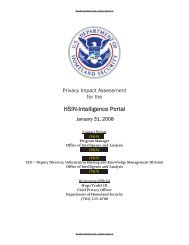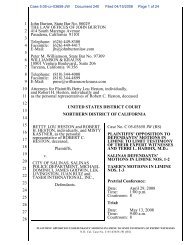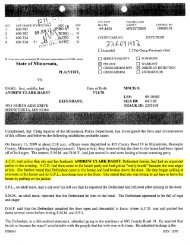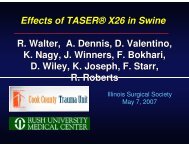TASER Electronic Control Devices Review Of Safety Literature
TASER Electronic Control Devices Review Of Safety Literature
TASER Electronic Control Devices Review Of Safety Literature
You also want an ePaper? Increase the reach of your titles
YUMPU automatically turns print PDFs into web optimized ePapers that Google loves.
electrodes are elsewhere on the body, as they are in the large majority of cases<br />
when the <strong>TASER</strong> device is used, the percentage of applied current that traverses<br />
the heart is even less. Also, drive-stun applications delivers even less current below<br />
the surface of the body.<br />
Figure 10. ECD current tends to follow the grain of the skeletal muscles. Very little penetrates<br />
the body below the muscles. (Note: this illustration is not to scale, nor does it illustrate<br />
the optimal electrical impulse vulnerable probe positions). Used with permission of<br />
IEEE Spectrum.<br />
MRI (Magnetic Resonance Imaging) studies show that electrical current has an<br />
additional impediment passing between the intercostal (between the ribs) muscles<br />
and the cardiac muscles, as their fibers are perpendicular to one another. 79<br />
Careful computer modeling studies show that very little current goes more than<br />
1 cm below the skin. 43,80,81 The safety factors are summarized in Table 3.<br />
2.8 Longer <strong>TASER</strong> ECD Applications Do Not Cause Arrhythmias<br />
VF can be induced by sufficiently strong electrical current flowing through the<br />
body. The current that is required to cause VF is dependent on the length of time<br />
for which the current is applied, but it is well established that the induction<br />
38




